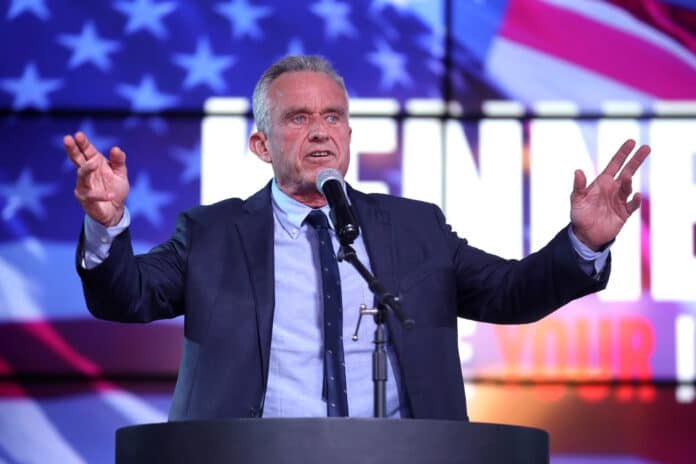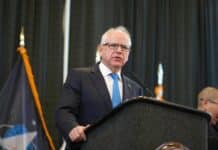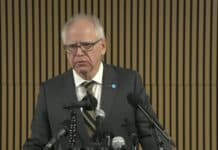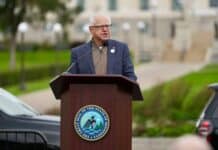
Minnesota has seen its share of third-party political movements ebb and flow over the last few decades.
Sometimes a third-party candidate has played spoiler. Voters even elected a third-party candidate governor in 1998, when Jesse Ventura, a Reform Party candidate, “shocked the world” when he bested Republican and Democrat challengers in what proved to be a three-way race.
Since the late 1990s and early 2000s the influence that third-party candidates have had on the outcomes of elections in Minnesota has dwindled, but they still have occasionally played a role.
But thanks to a new law, third-party candidates will have a steeper climb to gain or maintain some of the advantages afforded to the two established Republican and DFL parties in Minnesota. The change was just one of several policy-based new laws that went into effect this week.
For the first time this November, a candidate for a statewide office in Minnesota will have to earn at least 8 percent of the vote in order for their affiliated party to receive “major party” status in the next election cycle.
The previous threshold for major party status was 5 percent. The DFL trifecta changed that law in 2023 and further refined the language this spring. The effect of the higher threshold of vote share earned is to make it more difficult for third-party candidates to get on the ballot and receive public campaign funding in both statewide and legislative district races.
Although both the chairs of DFL Party and Republican Party of Minnesota expressed support for the change during the 2023 legislative session, it was DFL legislators who sponsored and ultimately passed the changes that Gov. Tim Walz signed into law.
When DFL legislators first proposed the bill in March of 2023, they proposed to increase the threshold of votes earned to achieve major party status from 5 percent to 10 percent. But a final version of the elections policy bill was amended so that the threshold was increased to 8 percent. Republicans in the House and Senate voted against a state government spending and policy bill that included that provision.
For context, in the 2016 presidential election, 8 percent of Minnesota voters cast their ballots for third-party candidates. Democratic nominee Hillary Clinton narrowly defeated Trump in Minnesota by 1.5 percentage points.
No third-party candidate eclipsed the state’s 5 percent threshold. But in 2018, a candidate for the Legal Marijuana Now Party earned 5.6 percent of the vote in the state auditor race, and a candidate for the Grassroots-Legalize Cannabis Party earned 5.7 percent in the attorney general race. Both of those parties have since lost major party status.
In May, a Minnesota Supreme Court ruling effectively reduced the Legal Marijuana Now Party to minor party status. The court’s opinion, which spans 27 pages, means only the DFL and Republican parties will continue to have automatic ballot access for their candidates, a share of public subsidy dollars and other legal protections that are also automatically afforded to major parties.
Could RFK Jr. pave the way for the next Jesse Ventura?
While minor party candidates can still get to the ballot, they are required by state election laws to collect nominating petitions in a short window.
So whether it’s a Green Party, Libertarian Party, Independence Party or even the fly-by-night “We the People” Party that presidential candidate Robert F. Kennedy Jr. has formed, in order to gain major party status in Minnesota, those third-party candidates now have to earn at least 8 percent of the vote in a statewide race.
The latest presidential polls conducted in Minnesota show Kennedy’s support among likely Minnesota voters ranging from 5 percent to 7 percent. If Kennedy can meet that threshold, he could pave the way for the next potential Jesse Ventura, who ran as a Reform Party gubernatorial candidate in 1998, and ultimately won, two years after presidential candidate Ross Perot earned nearly 12 percent of the vote in Minnesota’s 1996 presidential contest.
Ventura voiced opposition to the increased vote share threshold for major party status when the bill progressed through the legislature last year.
“Now I’m sure [increased hurdles] pleases both (Republican and DFL) parties, because I believe that’s why this is being done,” Ventura told legislators during a March 2023 hearing, “so that there can never be another Gov. Jesse Ventura. The people of Minnesota won’t be able to shock the world again.”
Hank Long
Hank Long is a journalism and communications professional whose writing career includes coverage of the Minnesota legislature, city and county governments and the commercial real estate industry. Hank received his undergraduate degree at the University of Minnesota, where he studied journalism, and his law degree at the University of St. Thomas. The Minnesota native lives in the Twin Cities with his wife and four children. His dream is to be around when the Vikings win the Super Bowl.











